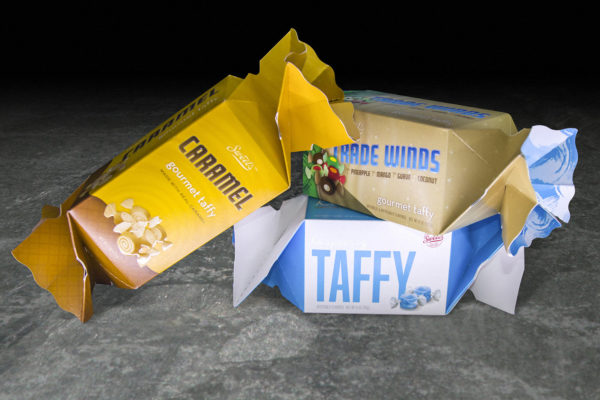When it comes to protecting your valuable art during a move or storage, the stakes couldn’t be higher. Proper packing is crucial not only to preserve the physical integrity of your pieces but also to maintain their value and beauty for years to come. In this guide, you’ll learn professional techniques to ensure your fine art remains safe, whether it’s traveling across town or across the globe.
Source: Photo by Pablo Merchán Montes on Unsplash
Understanding Art Types and Their Specific Needs
Every piece of fine art, whether it’s a delicate porcelain sculpture, a vibrant oil painting, or an intricate print, has unique needs that require special attention. Before you start packing, it’s essential to identify the type of art you’re dealing with. This knowledge will direct your approach, helping you choose the right materials and methods.
For paintings, especially those on canvas, avoid any contact with the paint surface. Use acid-free papers to protect against chemical interactions that can degrade the artwork over time. If you’re dealing with sculptures, consider the material—bronze, stone, ceramic—and think about weight distribution and potential stress points. Prints, particularly unframed ones, need a rigid support to prevent bending or creasing.
Understanding these nuances ensures that your approach to packing each piece is tailored and effective, guarding against common damage risks associated with each art form.
Materials Needed for Professional Art Packing
To pack your art like a pro, having the right materials is a must. Start by gathering the essentials:
- Acid-free paper: Ideal for wrapping paintings and prints, it prevents chemical damage.
- Bubble wrap: Provides cushioning for all types of art, but make sure to use it with a layer of soft paper to avoid direct contact with the artwork.
- Custom crates: Essential for sculptures and large pieces, these can be tailored to fit the exact dimensions and weight of your artwork.
You might also consider specialized materials like archival boxes for prints or foam inserts that can be molded to the shape of three-dimensional pieces. These materials are often available from art supply stores or directly from suppliers specializing in archival storage solutions.
Step-by-Step Packing Instructions
Packing Paintings:
- Place a piece of acid-free paper on the face of the painting to protect the surface.
- Add cardboard corner protectors to each corner of the frame to shield against knocks and bumps.
- Wrap the painting in a layer of bubble wrap, securing it with tape that doesn’t touch the artwork itself.
- For extra protection, place the wrapped painting into a mirror box that matches its size.
Packing Sculptures:
- If the sculpture is small and fragile, wrap it in acid-free tissue paper, then envelop it in bubble wrap.
- For larger sculptures, create a custom crate lined with foam that conforms to the shape of the sculpture.
- Secure the sculpture within the crate with straps to prevent movement during transit.
Packing Delicate Items:
- For ceramics or glass art, fill any hollow spaces with tissue paper to provide internal support.
- Wrap the piece entirely in bubble wrap, ensuring all sides are covered and cushioned.
- Place the item in a box that’s slightly larger than the piece, filling extra space with additional bubble wrap or packing peanuts to prevent any shifting.
Each step in this process is designed to address the specific vulnerabilities of the artwork, ensuring that it arrives at its destination in the same condition as when it left.
Climate Considerations During Packing
The climate plays a significant role in the preservation of art. Fluctuations in temperature and humidity can be particularly damaging. To mitigate these risks, consider these steps:
- Use desiccants: These moisture-absorbing materials help control the humidity within packing containers, essential for artworks sensitive to moisture, such as paper-based items or textiles.
- Wrap artworks in climate-controlled wraps: Special wraps or foils can help regulate the temperature and protect against sudden changes that might cause materials to expand or contract.
Selecting the right climate controls depends on the nature of your artwork and the conditions it will encounter during transport. This proactive approach can prevent long-term damage and preserve the integrity of your pieces.
Transportation Tips
Choosing the correct transportation method is crucial:
- Air transport is often the fastest and safest option for international shipping but can be expensive.
- Sea transport might be suitable for less sensitive items and larger shipments, though it takes longer and may expose items to varying climatic conditions.
- Road transport is generally more accessible and can be a good option for domestic moves if you can ensure the art is not left unattended in variable conditions.
Source: Photo by Nathan Anderson by Unsplash
When arranging transportation, ensure that the carrier has experience with art handling and offers insurance that covers art specifically. Use GPS tracking for peace of mind and to keep an eye on your art’s journey.
Unpacking and Installation Advice
Unpacking your art might seem straightforward, but it is just as critical as packing:
- Inspect the packages: Before you start unpacking, check for any signs of damage to the packaging that might have affected the artwork.
- Unpack one item at a time: This minimizes the risk of accidents and allows you to focus on handling each piece correctly.
- Wear gloves: Always handle your artwork with clean hands or, ideally, with white cotton gloves to avoid transferring oils or dirt.
For installation, ensure that the display environment is stable in terms of climate and lighting. Use the appropriate hardware for hanging or displaying your pieces, considering the weight and size of each item to ensure they are securely mounted.
Common Mistakes to Avoid
Many art handling errors occur from rushing or underestimating the importance of small details. Common pitfalls include:
- Using non-archival materials: These can degrade and damage art over time.
- Poor labeling: Always clearly label your packages with ‘fragile’ and ‘this side up’ to ensure careful handling.
- Neglecting insurance: Always have comprehensive insurance for transportation and handling.
By avoiding these common errors and following the outlined best practices, you can greatly reduce the risk of damage to your art during packing, transport, and installation.
Consulting Professionals
Sometimes, the best decision you can make is to get expert help, hire Cadogan Tate fine art mover, especially when dealing with high-value or particularly fragile pieces. They are trained to manage the nuances of art packing, transportation, and installation.
When to Consider Professional Help:
- Complex Installations: If your artwork requires specialized installation, such as heavy sculptures or large-scale installations.
- High-Value Items: For artworks that are not only financially but also sentimentally invaluable.
- International Shipping: Navigating customs and international art transport laws can be complex and is best handled by experts.
Choosing the Right Art Logistics Service:
- Reputation and Experience: Look for services with stellar reviews and a track record of handling art similar to yours.
- Insurance and Liability: Ensure they offer adequate insurance that covers the full value of your art during all handling phases.
- Detailed Service Agreement: A clear contract that outlines all services provided, from packing to installation, is crucial.
Conclusion
Packing and transporting fine art with the care it deserves ensures that it continues to bring beauty and value for years to come. Remember, the time and resources you invest in properly handling your art are a direct investment in its longevity and preservation. This comprehensive guide aims to arm you with the knowledge and tools to confidently manage the packing, transport, and care of your valuable artworks. Whether you choose to DIY or hire professionals, understanding these principles will help ensure that your art remains safe and sound for future generations to enjoy.


